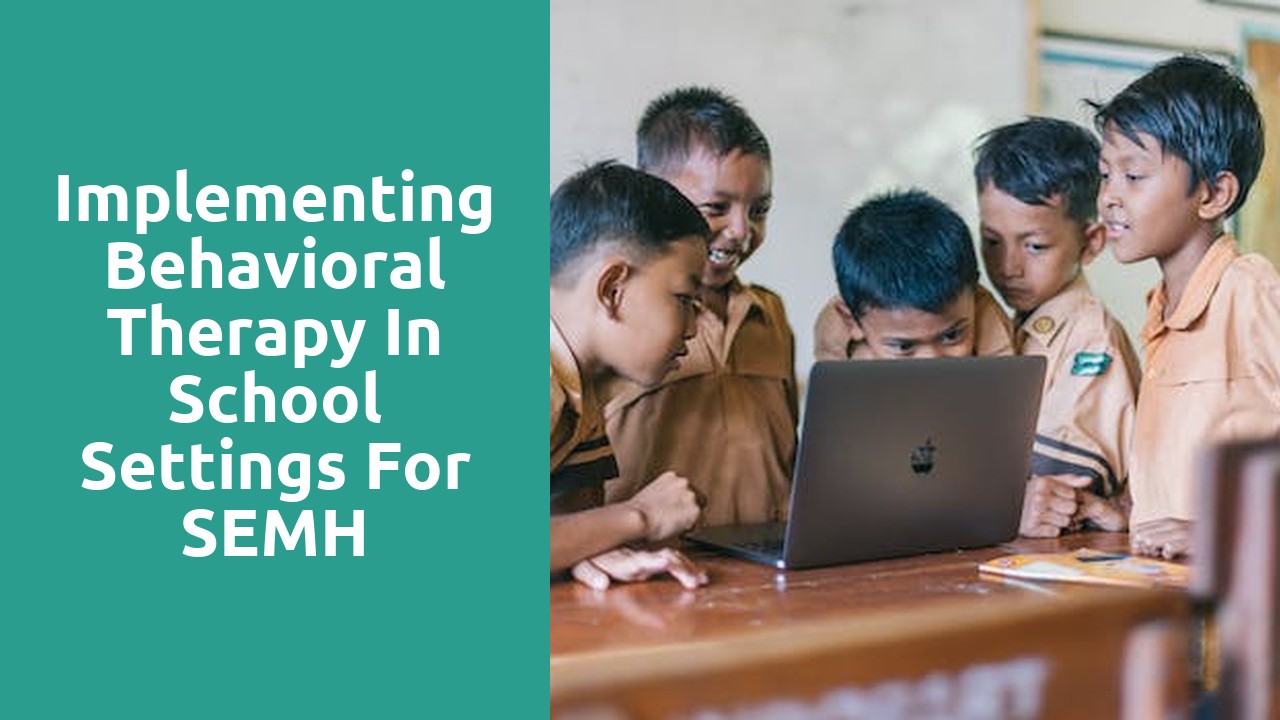

Enhancing emotional well-being is crucial for schools to create a positive and supportive learning environment. It not only benefits the students' mental health but also enhances their overall academic performance. Schools should prioritize the development of social and emotional skills to help students navigate challenges, build resilience, and maintain a healthy emotional balance.
One effective approach to enhancing emotional well-being in schools is to establish clear and consistent routines. Providing students with a structured environment helps them feel secure, reduces anxiety, and promotes a sense of control. Teachers can incorporate daily rituals, such as morning meetings, mindfulness exercises, or check-ins, to create a predictable and safe space for students to express themselves. Additionally, encouraging open communication and active listening fosters a supportive community where students feel valued and understood. Creating a culture that emphasizes empathy, kindness, and inclusivity allows students to develop meaningful connections with their peers and teachers, strengthening their emotional well-being.
School environments play a crucial role in supporting the mental health of students. Creating a safe and inclusive space where students feel supported and valued is essential for their emotional well-being. One strategy to transform school environments is by promoting positive relationships among students, staff, and parents. Encouraging open communication and collaboration builds a sense of community and fosters a supportive atmosphere. Additionally, providing access to mental health resources and support services within the school can help students seek help when needed and reduce barriers to receiving support. By transforming the school environment to prioritize mental health, schools can contribute to the overall well-being of their students.
Challenging behaviors in students can present significant obstacles to their academic progress and overall well-being. It is important for schools to have effective strategies in place to address these behaviors and provide support to students who may be struggling. One key approach is to establish clear expectations and rules for behavior, ensuring that students understand what is expected of them and the consequences for not meeting these expectations.
In addition to setting clear expectations, it is crucial to provide students with the necessary tools and resources to manage and regulate their emotions. This may involve teaching students coping strategies, such as deep breathing exercises or mindfulness techniques, which can help them to calm themselves down in moments of frustration or anger. Moreover, it is important for educators to model positive behaviors and attitudes, as this can have a profound impact on students' own behavior. By consistently reinforcing positive behaviors and acknowledging students' efforts, educators can create a supportive and nurturing environment that promotes positive change and growth.
Creating a positive classroom climate for students with social, emotional, and mental health needs is crucial for their overall well-being and academic success. This can be achieved through various strategies that foster a supportive and inclusive environment. One key aspect is the promotion of empathy and understanding among students. Encouraging them to respect and value each other's differences helps to create a sense of belonging and reduces the occurrences of bullying or exclusion. By fostering a culture of kindness and acceptance, teachers can help SEMH students feel safe and supported in their learning environment.
Another important strategy is the implementation of clear and consistent expectations and routines. SEMH students often thrive in structured environments where they know what is expected of them and what to expect from others. Providing them with predictable routines and setting realistic goals can help reduce anxiety and create a sense of security. Teachers can also incorporate activities and practices that promote self-regulation and emotional well-being, such as mindfulness exercises or journaling. Teaching students how to manage their emotions in a healthy way not only benefits SEMH students but can also enhance the overall classroom climate for all students.
Building strong relationships with students who have social, emotional, and mental health (SEMH) challenges is a crucial aspect of creating a supportive classroom environment. These students often face unique struggles that can inhibit their ability to engage with their peers and connect with their teachers. Therefore, it becomes essential for educators to establish rapport with SEMH students to foster a sense of trust and belonging.
To build strong relationships with SEMH students, teachers should prioritize empathy and active listening. It is important for educators to recognize and validate the emotions and experiences of these students, showing them that their feelings are understood and respected. By actively listening to their concerns, teachers can create a safe space where SEMH students feel comfortable expressing themselves without fear of judgment. This can be achieved through maintaining eye contact, nodding to show understanding, and providing verbal affirmations to acknowledge their feelings. Ultimately, by demonstrating empathy and actively listening, teachers can lay the foundation for strong relationships with SEMH students, creating an environment where they feel supported and understood.
In order to effectively nurture social and emotional skills in the classroom, teachers must create a supportive and inclusive environment. A welcoming atmosphere where students feel safe and valued is crucial for their emotional well-being and development. This can be achieved by promoting respect and kindness among students, encouraging open communication, and fostering a sense of belonging. Teachers should prioritize creating opportunities for collaboration and teamwork, as they not only foster social skills but also allow students to develop empathy and understanding towards their peers. Additionally, incorporating activities that promote self-reflection and self-expression can help students become more self-aware and develop a positive self-image.
Furthermore, teachers can integrate social and emotional skill development into their curriculum by incorporating it into daily lessons and activities. For example, incorporating group projects and discussions that require students to work together and understand different perspectives can enhance their social and emotional skills. Teachers can also incorporate literature and stories that highlight characters facing and overcoming social and emotional challenges, providing a platform for discussions and reflections. Through these intentional and purposeful efforts, teachers can effectively nurture social and emotional skills in their students, ultimately creating a positive and inclusive classroom climate.